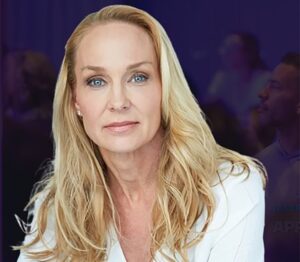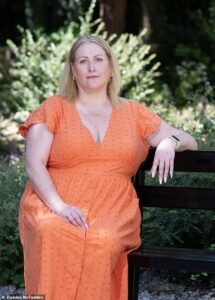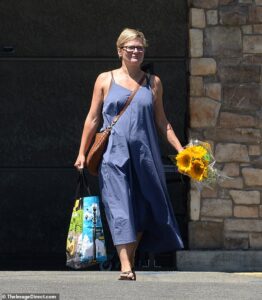- Every night she demanded a whole side of beef, a leg of lamb and a roast chicken
- Her butler got up at 4.30am to put her watercress on ice
- She spent £25,000 in just one hour in Bloomingdales…
- … and at one point she owed up to £4million to 200 creditors. Just some of the eye-popping claims about Sarah Ferguson’s vulgar extravagance as revealed in a sensational new biography of Prince Andrew
By ANDREW LOWNIE
Published: | Updated:
Based on four years of research and hundreds of interviews, an explosive new biography of Prince Andrew has given a startling insight into his hedonistic life, controversial friendships and secretive money-making endeavours.
Today, in the penultimate part of the Daily Mail’s exclusive serialisation, acclaimed historian ANDREW LOWNIE turns his attention to the Duke of York’s ex-wife, Sarah Ferguson, and her lavish lifestyle…
The story of Sarah Ferguson, the Duchess of York, is, like Prince Andrew, marked by ambition and financial recklessness. The bubbly young redhead was initially seen as a breath of fresh air when she married him in 1986, but her exploitation of her royal status to make money has seen her join her ex-husband as a hugely diminished figure.
She partied, she took lovers, she was indiscreet, causing Princess Margaret to tell the duchess: ‘You have done more to bring shame on the Royal Family than could ever have been imagined. Clearly you have never considered the damage you are doing us all. How dare you discredit us?’
But what was every bit as astonishing was her extravagant lifestyle, her excess. She spent money on an epic and often mindless scale, money that more often than not she did not have.
This particularly came to light after her separation from Andrew in 1992. In the summer of 1994 she rented Domaine La Fontaine near Cannes for £20,000.
Though it was dubbed self-catering, she was accompanied by a butler, two housekeepers, a dresser, a general assistant and a nanny. Two other assistants flew in and out; two Scotland Yard protection officers were there to protect the royal daughters.
A truck from England brought sun loungers and swimming pool toys for the children and five extra telephone lines were installed, one at the pool. There was a daily delivery of wine, including Laurent-Perrier rosé champagne and her favourite Puligny-Montrachet at £60 a bottle, often opened and then not drunk.
While she was there, the duchess received a call from Romenda Lodge – her six-bedroomed rented house with swimming pool back in England where she’d installed a marble ensuite bathroom for herself and six new telephone lines – telling her that the electricity company was threatening to cut her off over an unpaid bill for £1,400. She had refused to sign the cheque before her departure, saying: ‘I’m not interested.’
The year before, Sarah was spending every other weekend in Ireland at a stud farm owned by one of Ireland’s leading international showjumpers.
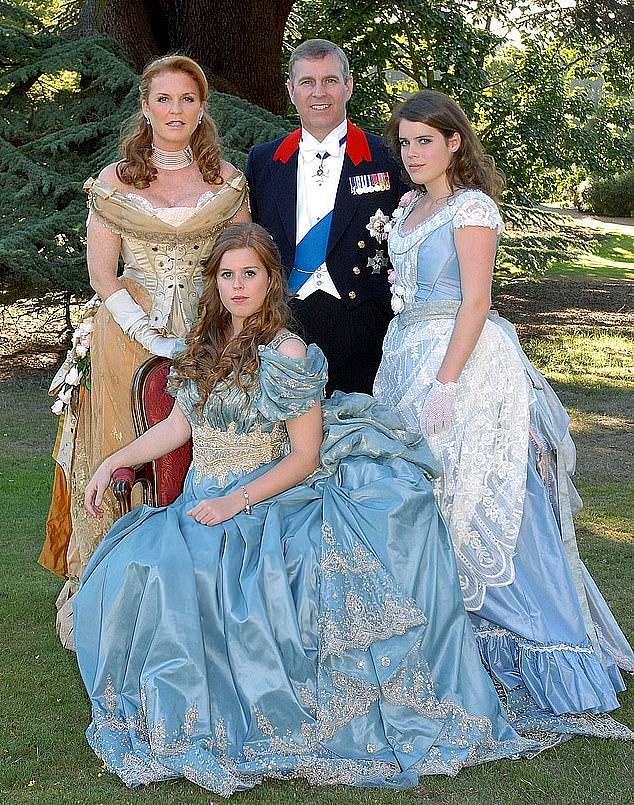
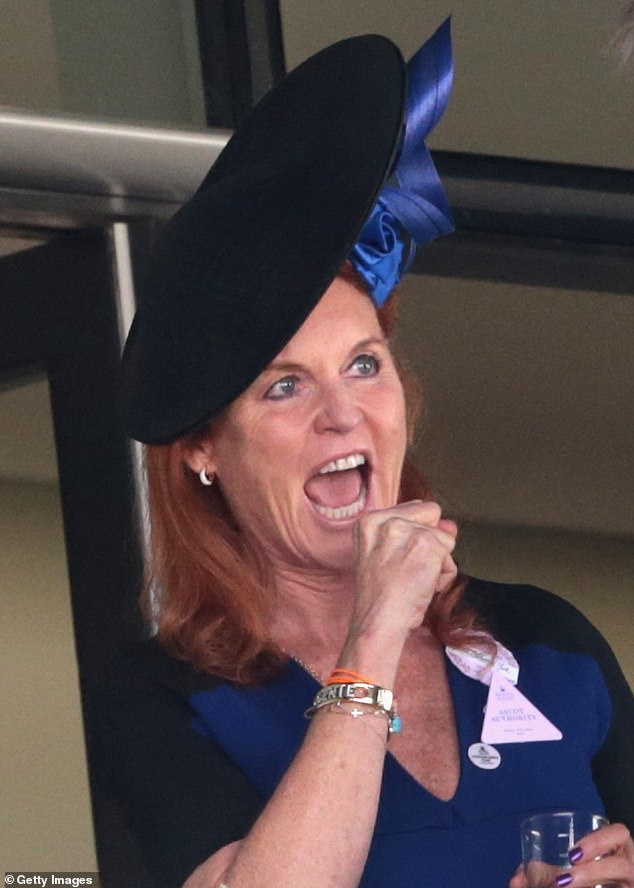
Calling herself Sally Metcalfe, she took part in gymkhanas and bought a top-class showjumper called Heather Blaze, aiming to represent Britain at the Olympics. But the horse lost its footing at the Dublin Horse Show, fell and shattered its left foreleg. It was shot on the spot.
The money to buy the horse had come from Clive Garrad, founder of the Red Devil energy drink company, who was literally supplying her with bags of cash, as her bank Coutts increasingly prevented her from drawing money or paying cheques. She joined him in launching a number of nursing homes, claiming this would be her charity work.
The reality was that, in return for lending her name to a string of ‘Duchess of York Nursing Homes’, she would receive £1 per bed per night for each person in the homes – giving her a calculated income of £30,000 from the first year, rising to £200,000 within a few years.
She withdrew from the venture a few months before Garrad was declared bankrupt and jailed for VAT fraud.
But this overlapping of her charitable and other interests became something of a pattern.
In October 1994, she made a three-day trip to Kenya seeing sick children, with the sponsors laying on a private plane, a Land Rover and the £300-a-night Presidential Suite of the Mount Kenya Safari Club in a country where many people’s wages were £20 a week.
In between her charitable work, she took time off to go on safari and play with turtles on a beach.
She combined a six-day charity visit to the US with promotion for Budgie, her children’s book about a little helicopter, and attempted to interest the Hollywood studio Columbia TriStar in adapting Heather Blaze, her story of talking horses.
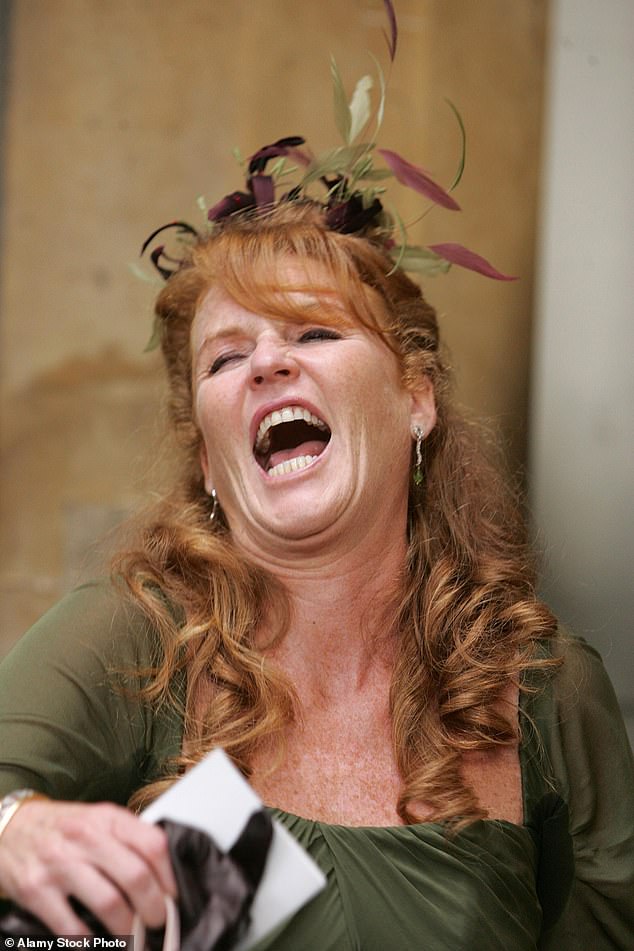
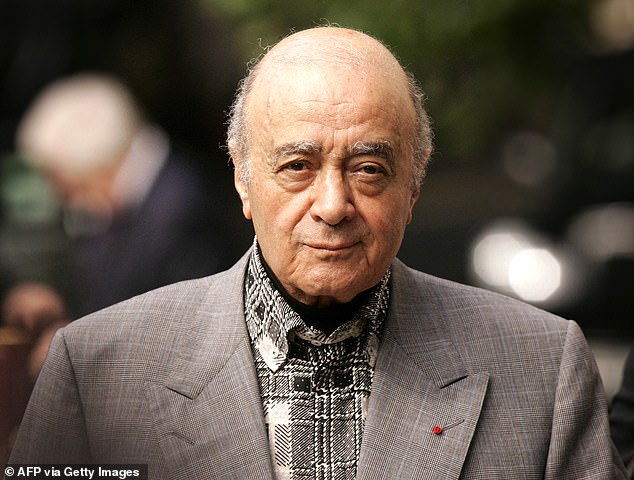
In Australia, she played off media outlets for the best-remunerated interviews and was reportedly in talks to make a guest appearance on Baywatch with Richard Branson.
Speaking to the National Press Club in Washington in December 1994, the duchess claimed to be short of money: ‘I’m a separated mother of two, largely responsible for the finances of my family. It really bugs me when I read that I’m a millionairess through my Budgie books. It’s rubbish.’
But City analysts estimated her earnings from Budgie over the next five years would be £2.8 million from merchandising alone. Some 58 companies had licensed rights, attracted by its royal connections – emblazoned across all Budgie products was ‘HRH The Duchess of York’. Her private secretary admitted that no percentage was now going to charities as previously promised.
In 1995, she moved house, to an eight-bedroom property set in 12 acres with an all-weather tennis court, outdoor swimming pool, two-bedroom guest cottage and chauffeur’s flat with a gipsy caravan in the garden for the children.
Appearing in Hello! magazine for the tenth time – recent articles had covered skiing holidays, Beatrice’s sports day, a polo match and her involvement with the Young Victoria film (for which she had been paid £50,000) – she explained that she was in such financial straits she would have to concentrate on earning money rather than her charity work.
But in spite of pleading poverty she still employed a butler, chauffeur, cook and secretary, and spent £16,000 annually on phone bills. Her expenses included not only the £6,000 monthly rent, but a staff bill of £32,000 a month.
The previous week she had spent £25,000 on frocks, shoes and handbags, and £3,000 on a champagne tea party for the 150 builders and removal men who had helped her move.
A World In Action film claimed money earmarked for Romanian orphans had been eaten up by Sarah’s generous expenses and that she had personally pocketed £7,000 for an article in Hello! on a trip to an orphanage in Moldova.
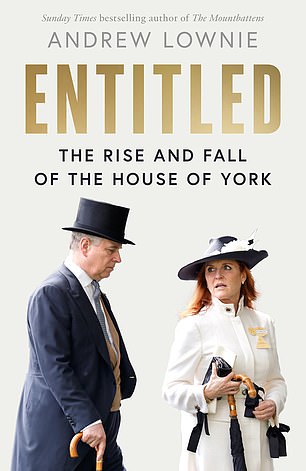
There was growing Press comment on her holidays, with five in seven months – three skiing trips to Switzerland, visits to Bermuda and California, and ten days, part of it with Princess Diana, at a villa in the South of France.
According to one holidaymaker who met her: ‘It was just non-stop partying. She kept wanting to throw parties, stay up all night. She organised one bash and spent hours telling dirty jokes. It was most uncomfortable.’
A friend expressed concern about Sarah’s behaviour at social functions, which could often be a performance and inappropriate, but masked deeper insecurities: ‘She assumes, quite wrongly, that she has to sing for her supper.
‘She tells dirty jokes. I have seen her among a group of people she had never met before doing the fake orgasm sketch from When Harry Met Sally. The following morning she will ring around seeking reassurance that she had not made an ass of herself.’
By November 1995, by her own admission, Sarah’s debts exceeded £3.7 million and she needed bank approval to pay even modest cheques. But even then, according to a member of her staff, she always believed there would be ‘a deal around the corner’ that would solve all her problems.
She also found ‘ways and means of getting around her financial restrictions’. For example, Mohamed Al-Fayed, owner of Harrods, never pressed her to settle her account at the store, a practice she exploited elsewhere. A former employee confided: ‘These accounts just never get paid, somehow. The shops don’t complain because of who she is, or they never used to.’
In mid-January 1996, Palace officials revealed the Queen had met Sarah’s debts on ‘several’ occasions – involving six-figure cash sums, including one very large amount in April 1994 when Coutts had demanded she pay £500,000 within 14 days. But the Queen was drawing a line. A Palace statement said: ‘The Duchess’s financial affairs are no longer Her Majesty’s concern but matters which the Duchess of York must discuss and resolve with her bankers and other financial advisers.’
Friends were also losing patience. One who had lent her £100,000 to pay for a holiday in the South of France threatened to sue the duchess at the High Court after she paid back only £5,000, claiming she understood the rest to be a gift. She owed her hairdresser £40 for hair done months ago.
But still the spending went on – £14,000 in just one month with a particular London wine merchant. Over the previous year Sarah had travelled to Puerto Rico, Bermuda, Switzerland, Hong Kong and Poland and made four trips to America, each time staying at the luxury Carlyle Hotel, where the cheapest suite was £330 a night.
On a three-day visit to New York, she had one car to take her to the airport and another for her ten suitcases, all tissue-lined, with more outfits than she could hope to wear. Her assistant Christine Gallagher had once been sent on Concorde, at a cost of £5,000, to bring her some paperwork.
In a newspaper article, her former lover and financial adviser John Bryan revealed that her £860,000 annual expenditure included £300,000 on staff, £150,000 on gifts, £50,000 on flowers, £50,000 on parties, £150,000 on travel and £100,000 on clothes – £25,000 of it in an hour’s spending spree in Bloomingdales.
The finances of the duchess’s American charity Chances for Children now came under scrutiny. As a non-profit-making organisation, it did not have to pay tax and its office on Sixth Avenue was provided rent-free by US News & World Report, the weekly owned by Mortimer Zuckerman, a powerful contact of Sarah’s.
There were concerns, though, that the charity was also being used as the US branch of her private office, with staff there required to locate her favourite perfume and fix meetings with fortune tellers, diet doctors, hair stylists and manicurists.
One investigation found that less than half of the £110,000 donated to the charity was going to sick children. Tax records showed that over a six-month period wages and expenses came to £58,500, with only £40,000 being charitable donations. As the investigative article exposing this went public, she was on holiday in the Bahamas with her daughters.
Some of her declared charities received nothing at all. The Sarah Ferguson Foundation claimed to help the Littlest Lamb orphanage with a ‘substantial donation’ to build a kids’ home in Cairo, but its director Mira Riad revealed: ‘She has never paid us.’
Meanwhile, she continued to live beyond her means, employing a cook, driver, maid, butler, dresser, nanny, three secretaries, a personal assistant, lady-in-waiting, two gardeners, flower arranger and dog walker.
An accountant brought in to cut costs asked one member of staff what he did, and received the reply: ‘I pick up the dog poo.’ ‘And you?’ he asked, pointing to the person beside him. ‘I help him.’
The duchess remained in denial about her debts. According to a friend: ‘I have heard her throw an absolute screaming fit when one of her staff showed her a letter from the bank. She just doesn’t want to know.’
The tantrums kept staff turnover high. ‘Car journeys are the worst,’ said one aide. ‘She will sit on the phone screaming at employees and reduce everyone to wrecks. Then she will wonder why we are so unhappy.’
By now she was up for virtually anything if there was money at the end of it. For £100,000, she accepted an invitation in early 1997 from an Austrian building magnate, Richard Lugner, to open a shopping precinct in Vienna, do a book signing and accompany him to the Vienna Opera Ball, the highlight of the city’s social calendar.
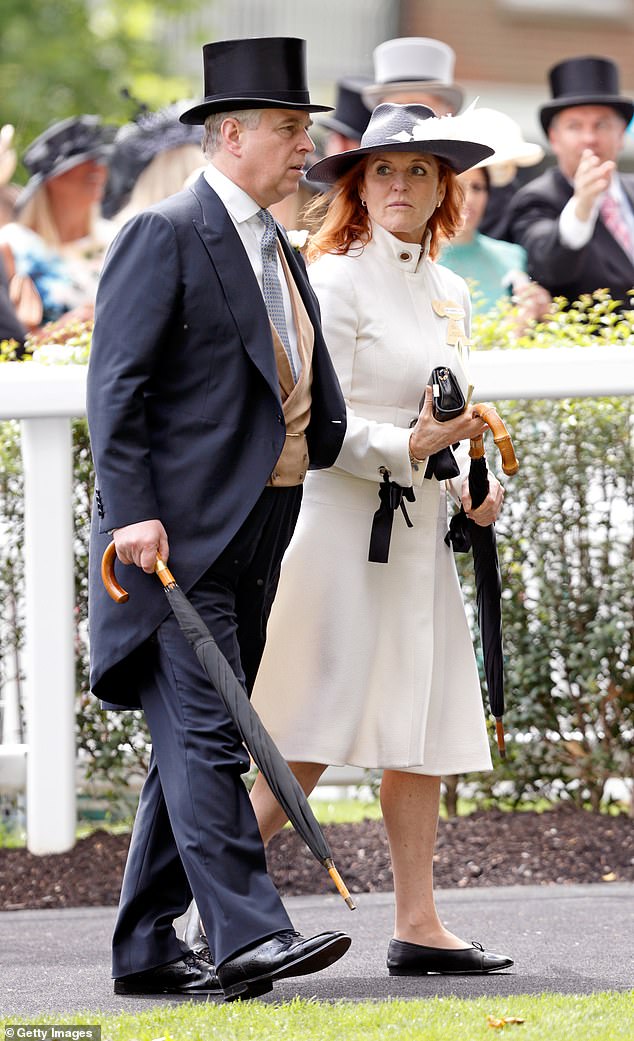
Addressed variously as Your Highness, Lady Ferguson, Lady Sarah and Princess, she was escorted through the shopping centre by fake guardsmen while an oompah band played the national anthem.
Lugner’s wife, dressed in leather trousers, then presented Sarah with a pillowcase with her face emblazoned on it. The pitch line for the pillow was that you too could sleep with the duchess.
That same year of 1997 Sarah became the first royal to endorse a product on television when she advertised Ocean Spray cranberry drink for a fee of $500,000 (£376,000). It took more than 100 takes to create the two 30-second shots. (Her TV ad career eventually led to her promoting hair straighteners on the QVC shopping channel, boasting that they came in ‘royal purple’, in return for a six-figure fee.)
But she was now able to pay off major debts, helped by the advance on her memoirs, income from WeightWatchers, with whom she had a tie-up worth £500,000 over three years (as long as she stayed under 10st), six interviews with Paris Match and £300,000 for two children’s books. She still, though, had a £1.6 million tax bill to clear.
Her spendthrift lifestyle showed no signs of changing, however.
For his 50th birthday in 2010, Sarah gave Andrew a miniature portrait of their daughters in pastel, for which the artist had charged £7,000. It was placed in a double-fronted silver travel case.
In spite of ‘gentle’ reminders from the artist for more than a year, and threats of legal action from the luxury gift firm TJK London, the bill for both picture and its £4,000 case, which had Sarah’s crest and the initial S engraved on the front, had not been paid by the time the story hit the Press.
This was not the first time the duchess had been sued for failing to settle her bills. In April 2009, a law firm lodged a claim in court for an unpaid bill of £1,750.
Two months later, a small firm of accountants in Harpenden put in a claim for £18,132, and the duchess finally settled an outstanding £2,117 bill for prints with Shades, a family-run photographic business in Woking, after it went to court.
It was reported she owed several thousand pounds to a Malibu-based ‘spirit guide’ who lived on a ten-acre estate called the Temple of Awakening. Then there was £17,000 to Richard Owen, a member of her staff, for two months’ work to help build her ‘Brand Fergie’. (Eventually all the bills were settled.)
In April 2010, it emerged that the duchess was being sued by Mayfair solicitors Davenport Lyons for £200,000 for work they had done on a deal to turn her children’s books into an animated television series and to create and protect a trademark under which she planned to market a range of ‘lifestyle’ goods on QVC.
Reminders and a request to discuss a ‘credible payment plan’ for eight unpaid invoices had been ignored. In October 2009, the duchess agreed to pay £30,000, with a further £50,000 to come – but no payment materialised.
And there were yet more humiliations, with revelations that Sarah had some 200 debtors and her debts ranged from £2 million to £4 million. An aide had run up £8,000 on his credit card on her behalf. She owed £5,000 to a London-based complementary medicine practitioner and £65,000 to a personal trainer, whom she kept on permanent standby but had used twice in the previous year.
A newsagent had refused to supply her after an unpaid bill of £500. Other creditors included a local butcher, dry cleaner and car hire firm. The BP card that was used at local petrol stations was eventually confiscated because of unpaid arrears.
She had racked up a £6,500 bill using the Queen’s special mail service on ‘an almost daily basis’, sending out hundreds of letters, photographs and gifts, which included silver letter openers, money clips and cufflinks.
She had run up a bill of £51,000 at Selfridges, making purchases through the store’s senior personal shopper, who was an old schoolfriend. At Christmas two of her staff spent nearly a day in its VIP section choosing hundreds of expensive items for a Christmas party and, according to one source: ‘Someone was dispatched every three or four days to pick up tights, face creams and expensive hair products.’
Part of the problem was the sheer wastage. In May 2009, she signed a year’s lease on a house at £8,000 a month but stayed with Andrew at Royal Lodge instead. The result was £50,000 spent on a house she never lived in.
At this point the duke and his deputy private secretary, Amanda Thirsk, stepped in and assessed the duchess’s overheads. Twelve staff were made redundant, some of whom hadn’t been paid for up to six months.
They included Colin Tebbutt, her driver for ten years who had previously driven for Princess Diana, her long-standing dresser Jackie McLeod and Sally Fish, her right-hand woman for 15 years.
Many received only the statutory minimum redundancy pay and were asked to work out their notice for free.
Andrew, or more likely his mother, paid off many of the debts. Creditors of Hartmoor, Sarah’s lifestyle and wellness company, were paid 25 per cent of the money they were owed. Two hire cars were returned, attempts were made to sell the duchess’s Mini Cooper S and a valuation was sought on a £130,000 Bentley Continental Flying Spur, which had been lent to her.
Sarah’s reaction to crisis, as so often, was to go on holiday. First stop Sotogrande in Spain, then to a £1,500-a-night five-star Portuguese luxury spa resort, where she signed up for an eight-day £3,000 weight-loss and anti-ageing programme, which included her own personal trainer and face mesotherapy involving extracts being injected into the skin.
A sacked staff member revealed the greed and wastefulness that contributed to the duchess’s financial downfall: ‘Every night she demands a whole side of beef, a leg of lamb and a chicken, which are laid out on the dining room table like a medieval banquet. It’s a feast that would make Henry VIII proud.
‘But often there is just her and her girls, Bea and Eugenie, and most of it is wasted. There is no attempt to keep it to have cold the next day. It just sits there all night, and the next day it’s thrown away.’ Sometimes the meals would go virtually untouched while the duchess and her daughters munched on Kettle crisps.
Sarah would regularly miss flights that were not refundable. According to one source: ‘She thought nothing of arriving at an airport with 25 cases and paying between £800 and £4,000 in excess baggage. At least five of those cases were packed with toiletries and make-up. Another would be used solely for clothes hangers.’
Personal trainers, hairdressers and Pilates instructors were paid hundreds of pounds an hour to wait for her to emerge for the day in the late afternoon. Her butler had to get in at 4.30am to put watercress on ice.
‘She would just breeze out of the Four Seasons and the Palace in New York as if she was too important to pay,’ said one source. ‘There would often be large room service bills but she got away with it more often than not.’
But luxury hotels and restaurants were where she felt most at home, even when apparently slumming it.
In 2008, a television programme, The Duchess In Hull, aired on British TV. Five million viewers watched her live among a family of six in Hull and advise them how to live more healthily on a budget of £80 a week.
The producer remembered Sarah saying at the outset: ‘I won’t have to eat what they eat, will I?’ She also wanted the recipes for the programme to be cooked either by her personal cook or the London restaurant Cipriani. In the end celebrity chef Jean-Christophe Novelli produced them.
The head of the family in question thought that, while the duchess did succeed in changing the family’s eating habits, it was really just a publicity stunt in which Fergie was trying to enhance her image.
Shortly afterwards she approached the supermarket Asda with a view to marketing her own range of healthy eating products.
How Fergie pursued John Kennedy Jr and Tiger Woods
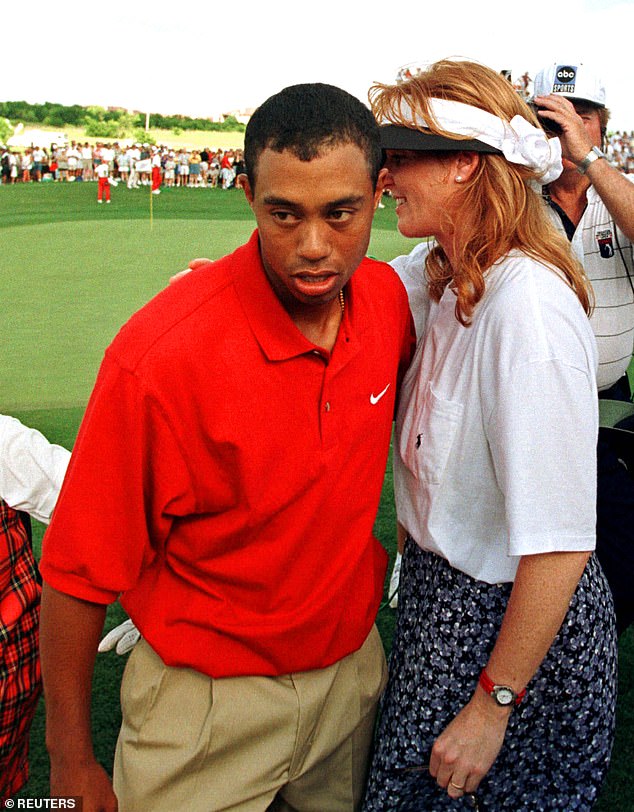
On A trip to New York, Fergie asked her staff to find out if John Kennedy Jnr – handsome son of the assassinated JFK – was in town and, discovering where he was, she invited him for drinks or dinner at her hotel, which he accepted.
On being told that Kennedy had a girlfriend, the actress Daryl Hannah, the duchess replied: ‘That’s not going to bother me!’ But it bothered Hannah, and Kennedy cancelled, claiming a prior engagement. Staff were then ordered to spy on his apartment all night to check that he had told the truth.
The duchess was not to be discouraged, especially after learning that Princess Diana had met Kennedy for 30 minutes at Christmas 1995 at a New York hotel. She was furious: ‘He’s mine! Why can’t she just leave him alone?’
She gave Kennedy a code name, ‘Number Nine’ – his place in the order of her lovers, with Steve Wyatt ‘Number One’ – and spent hours scouring magazines for articles about him, cutting out pictures of him in his swimming trunks and talking to her friends about whether he would like different aspects of her personality.
A close confidante revealed: ‘She’ll suddenly ask, “Do you think Ken will mind that I don’t like such and such a thing?” It’s incredibly real to her, like a schoolgirl crush. She spends hours talking about him. The fact that she’s never even met him doesn’t seem to matter at all.’
Another of her amorous obsessions was actor Kevin Costner. After she plagued him with raunchy phone calls, he reputedly told friends, ‘She’s a woman crying out for love.’
Then there was golfer Tiger Woods, whom she flew 1,500 miles flight to meet, then confided to broadcaster Piers Morgan: ‘I’m in love.’ ‘Who’s the lucky guy?’ Morgan asked. ‘He doesn’t know yet,’ the Duchess replied. ‘It’s Tiger Woods! He’s so gorgeous. Do you think I stand a chance with him?’
When Morgan suggested Woods might not have much room in his schedule for dating royals, Fergie roared again: ‘Well. I am going to follow him around the course for a bit and see how I get on.’ Morgan concluded, ‘Poor old Tiger isn’t going to know what’s hit him.’
Her other fancies included George Clooney. When asked in an interview if she would go out with him, she replied: ‘Are pork chops greasy?’
Adapted from Entitled by Andrew Lownie (William Collins, £22), to be published August 14. © Andrew Lownie 2025. To order a copy for £18.70 (offer valid to 16/08/25; UK P&P free on orders over £25) go to www.mailshop.co.uk/books or call 020 3176 2937.


